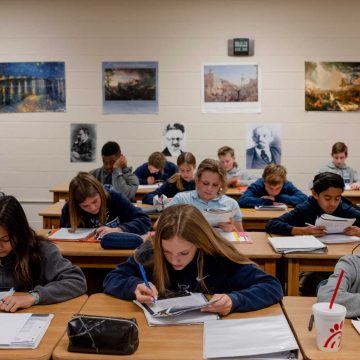In Ballet Class Music, phrasing is most likely probably the most misinterpreted element and definitely probably the most important. It is a complex and infinitely detailed subject and the objective of this information is to merely give an introduction to how musical phrasing may be used to effectively enhance music for ballet class.
The Motosonus Method
The right utilization of phrasing in ballet class is really a key factor within the Motosonus Approach to writing and performing music for ballet class and we’ll be concentrating on a couple of from the techniques from that system.
What’s Phrasing?
We are able to compare phrasing in music to the way test is spoken in poetry. We are all acquainted with how important effective delivery of poetry is. It will make a big difference whether or otherwise we even want to hear the poetry. Whenever we get this to comparison it’s not hard to know how musical phrasing will powerfully modify the emotional content from the music and only enhance or undermine its usefulness. It really is not at all something that you would leave to chance.
How’s Phrasing Used?
In the simplest level, phrasing must offer an aural cue towards the dancers, allowing them to know where things stop and start. When these arrival and departure points are clearly shown by the background music, it provides the ballet class pianist the opportunity to increase the impact from the exercise around the dancers. One of the ways this is achieved is as simple as governing the ending from the phrases, referred to as arrival-points. These may be delayed slightly or pressed slightly, to increase a stretch, delay muscle relaxation, or alter the apparent tempo for any specific mental effect.
Specific Examples
An operating illustration of this is actually the grand battlement, in which the music can extend the appearance of the significant leg to the ground and intensify the workout from the large quads. Similar alterations in tempo in the ends of phrases may be used in most of the ballet class exercises to accentuate strength-building, certainly one of the greatest purpose of the ballet class. For instance, an upswing from a great plie could be extended, a frappe could be faster and sharper or perhaps a difficult balance may last another longer, and every one of this can be done by using effective phrasing.
This is when it falls towards the pianist to possess thorough understanding from the ballet exercises and also the facets of tension and relaxation involved with each, therefore the music may be used to its finest advantage.
Small Sub-Phrases
Additionally, there’s also an essential utilization of phrasing that can take devote a microcosm from the bigger phrase, using individual measures as well as individual notes and mixtures of notes to produce specific effects.
For instance, in exercises that need the smaller sized muscles to do quick motions for example degages and frappes, there might be eight small-phrases inside the bigger phrase that match a completing one frappe a treadmill degage. These sub-phrases are produced by using short (staccato) notes and sustained (tenuto) notes. The tenutos accompany the movement from the working leg from the body and also the staccatos match the snap, or arrival. Manipulating these little sub-phrases can greatly enhance the potency of the ballet exercise.
Summary
It is indeed my hope that this information has helped to explain how using phrasing may be used to create effective and effective music for sophistication. If you’re a ballet instructor this can be used information to help you in auditioning music for the classes, and when you are a pianist you are able to certainly employ they within the ballet class music that you simply compose and play.
Most of the ballet classes have great teachers, who provide lessons to Belle for people of all ages. In addition to the usual Belle lessons, there are also intensive courses for summer and some special courses for kids of 3 or 4 years. Such courses help in compatibility with their movement in music.


















